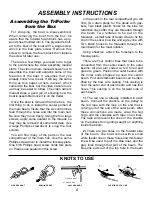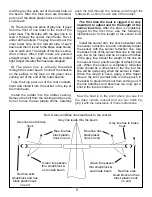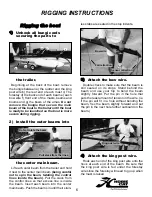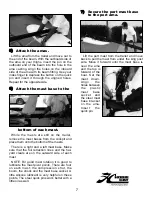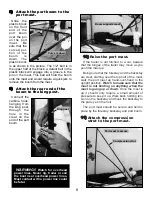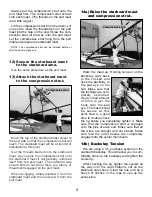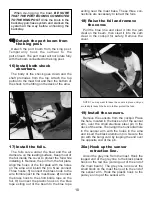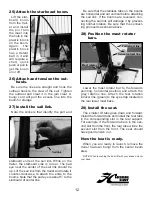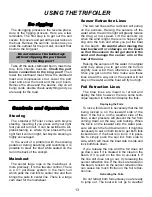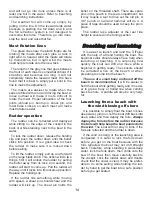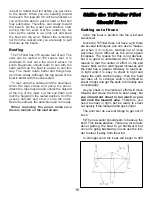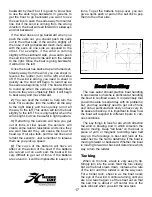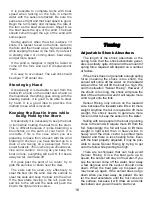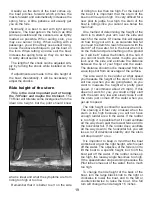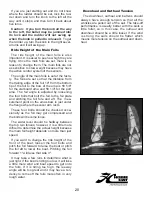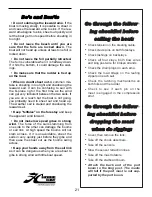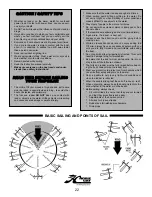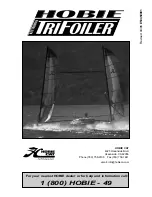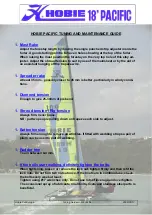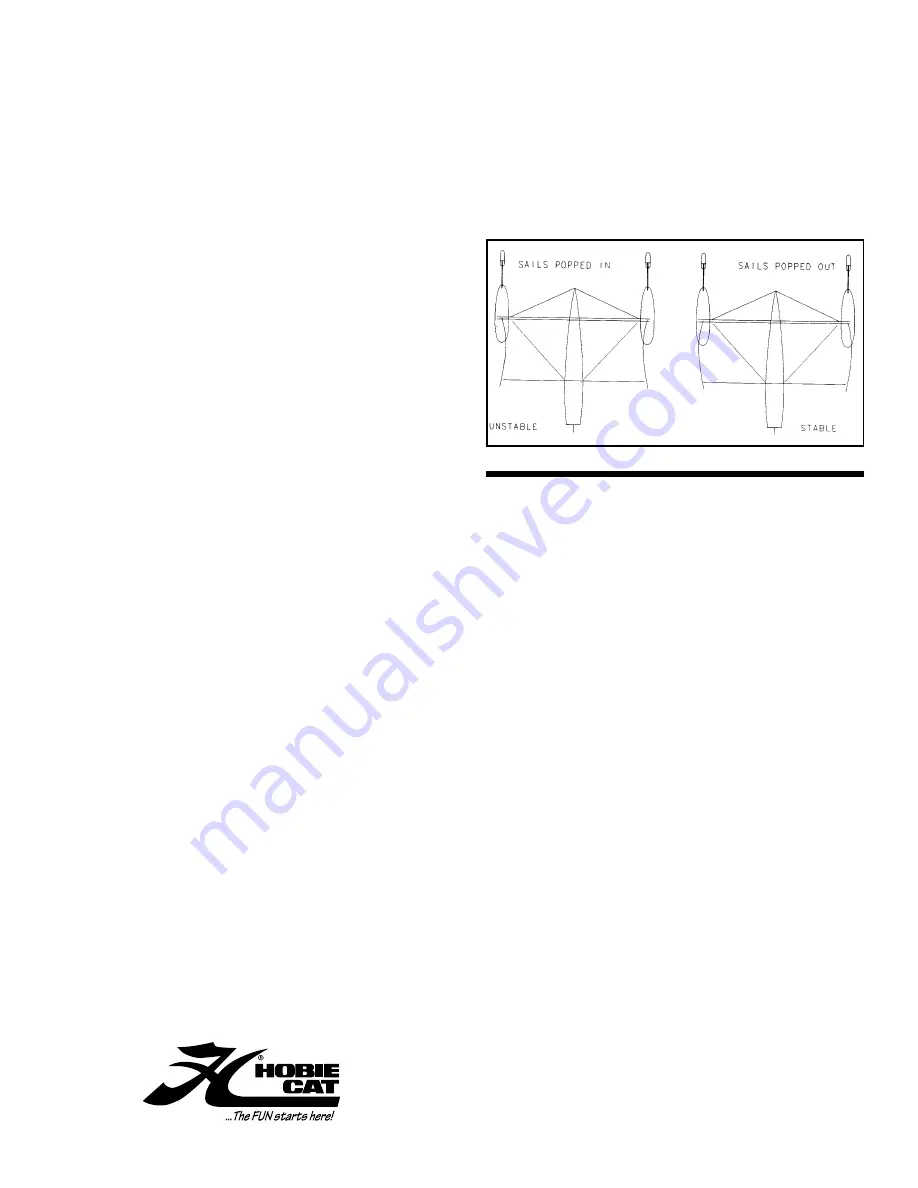
17
backward by itself, but it is good to know how
to use the sails to go backward. In general, to
get the boat to go backward you want to use
the sail link to push the sails away from center
line, but if the wind is coming from the wrong
direction, the boat will sail forward or sideways
and not backward.
If the boat does not go backward when you
push the sails out, you should push the sails
out to the other side. If the wind is slightly off
the nose, it will go backward much more easily
with the sails on one side as opposed to the
other. For example, if the wind is coming
slightly off the starboard side, you want to push
the sail link to the port side and turn the rudder
to the right. Since the boat is going backward,
it will turn to the left.
Once the boat has backed up and turned suf-
ficiently away from the wind, you can sheet in,
reverse the rudder (turn to the left) and take
off. If the wind is strong, you need to sheet in
quickly as the boat will begin to round up as
the sails are beginning to fill. The boat will tend
to round up when the sails are partially filled,
but once they are completely filled, it will begin
to bear away and move forward.
2)
You can skull the rudder to help turn the
boat. For example, turn the rudder all the way
to the right slowly and then quickly turn it all
the way to the left. This action will turn the boat
slightly to the left. This is only helpful when the
wind is light, but can be useful in tight quarters.
3)
Retracting the sensors will help you get
out of irons. At low speed, the sensors will
create some lateral resistance and since they
are well forward they will cause the boat to
head up. If all else fails, pull the red lines and
retract the sensors. Just remember to release
them as you pick up speed.
4)
The curve of the battens will have an
affect on the action of the boat. If the battens
are curved out on each sail, the boat will be
very difficult to get out of irons. If the battens
are curved in, it will be impossible to keep it in
irons. To get the battens to pop over, you can
give a quick push or pull on the sail link to pop
them to the other side.
Boat Handling
The new sailor should practice boat handling
in open water so he/she is proficient at handling
the boat in confined areas. It is quite likely that
you will be able to sail all day with no problems;
but, you may suddenly need to get out of irons
and onto a particular tack and you have very lit-
tle space to back up. It is important to know how
the boat will respond to different inputs in vari-
ous conditions.
The key things to look for are which direction
the wind is blowing and in which direction the
boat is moving. Keep "tell tales" on the boat. A
piece of yarn or magnetic recording tape half
way up the forestays is best and look at the
water next to the hull to determine if the boat is
moving forward or backward. Whether the boat
is moving forward or back will determine which
way to turn the rudder.
Tacking
When on the foils, a tack is very easy to do.
Simply turn into the wind. Start the turn slowly,
but as the boat slows down, increase the rate
of the turn until the rudder is all the way over.
For a better tack, sheet in as the boat nears
the eye of the wind. Continue turning until you
are on a reach again. Let the sheet out so that
the sail link is about 2’ off center line or the
sails will stall when you start the new tack.
Содержание TriFoiler
Страница 1: ...ASSEMBLY MANUAL...


